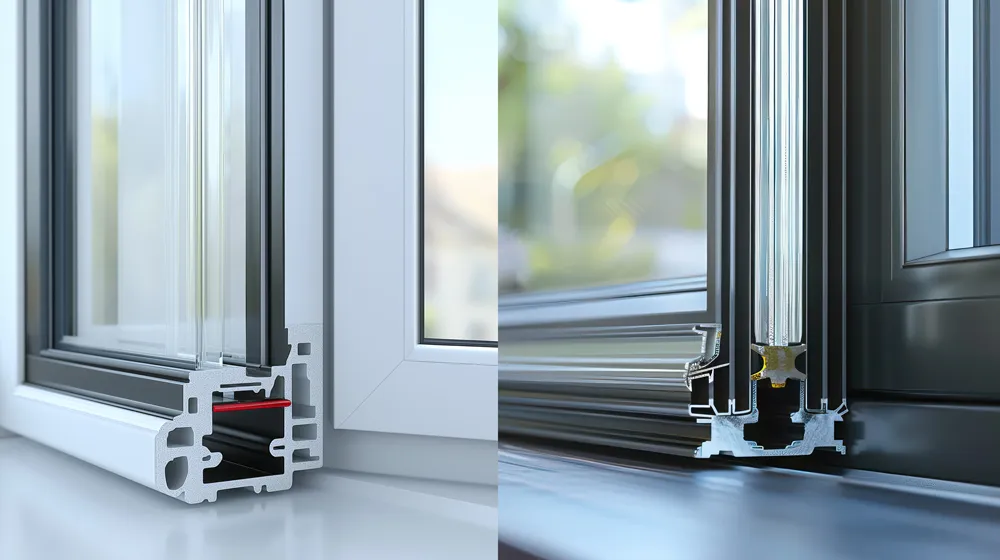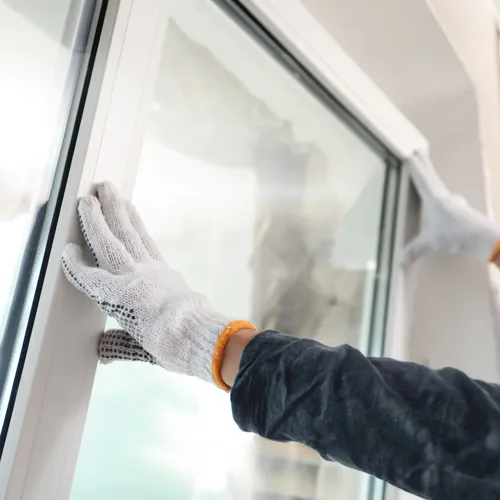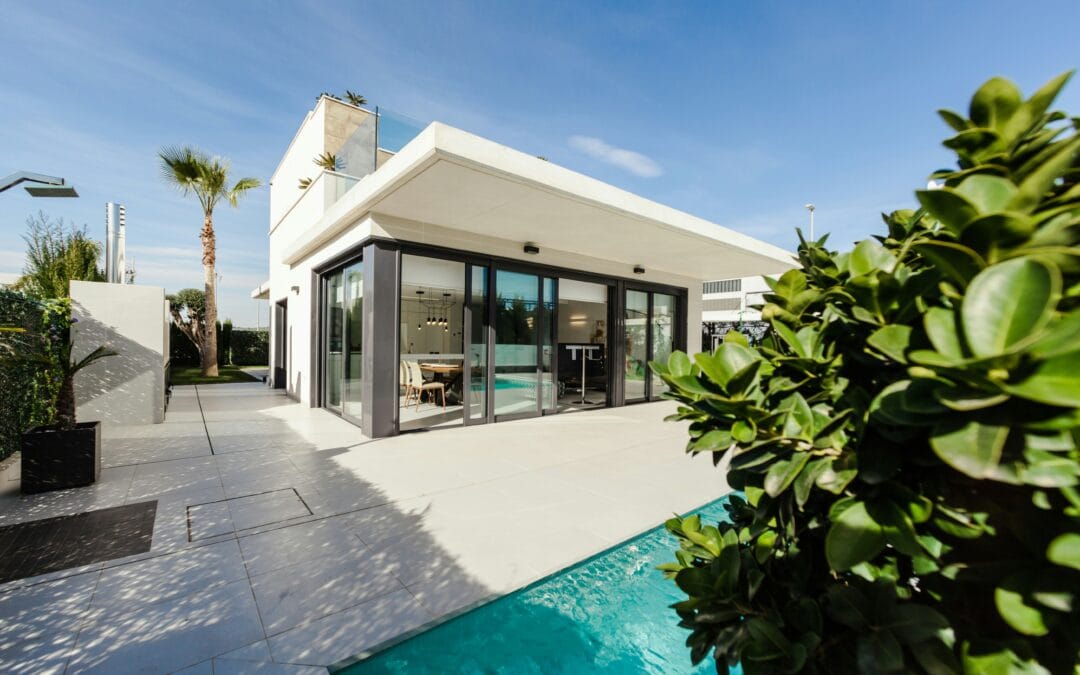The Homeowner’s Guide to Impact-Resistant Windows
Impact‑resistant windows pair reinforced frame systems with engineered glazing to defend buildings against wind‑borne debris, high wind loads, and forced entry — while also improving comfort and energy performance. This guide breaks down how impact glass is built and performs, which window styles work best for South Florida homes, how frame materials influence durability and thermal behavior, and which certifications matter for safety, permitting, and insurance. If you’re comparing laminated, tempered, and insulated‑laminated glazing — or weighing vinyl, aluminum, and wood frames — you’ll find clear, side‑by‑side explanations and practical checklists here. The guide also includes comparison tables for glass types, frame materials, and common certifications, plus selection tips tailored to coastal properties. Read on and you’ll have a straightforward framework for specifying impact‑resistant windows that meet code, protect your home, and match your priorities.
What Are the Main Types of Impact Window Glass and Their Benefits?
Impact glazing varies by layer construction, interlayer type, and how each product behaves after an impact. Those differences drive how a pane holds together after breakage, how well it reduces noise, and how it performs thermally. Laminated impact glass uses a polymer interlayer (commonly PVB or SGP) between glass plies to keep fragments bonded and absorb energy, giving post‑impact integrity and added security. Tempered and heat‑strengthened glass are thermally processed for greater strength and break into smaller fragments, reducing laceration risk but offering less post‑break retention than laminated systems. Insulated laminated units combine laminated glass with insulating cavities and low‑E coatings to improve U‑factor and SHGC while keeping impact resistance — a good choice when both storm protection and energy performance matter.
The table below helps homeowners match common impact glazing options to their construction and practical benefits.
In short: laminated and insulated‑laminated constructions excel at fragment retention and occupant comfort, while tempered products offer strength but less post‑break barrier performance. That distinction leads into how laminated interlayers protect homes during storms and everyday security events.
What Is Laminated Impact Glass and How Does It Protect Your Home?
Laminated impact glass is made from two or more glass plies bonded to a polymer interlayer — typically PVB or SGP. The interlayer keeps shattered glass adhered after an impact, spreads the load across the pane, and helps maintain a barrier against wind pressure and debris penetration. Laminated units also damp vibration, reducing airborne noise, and when combined with the right coatings they block a large share of UV radiation. Those combined benefits — debris retention, noise reduction, and UV control — make laminated glazing a practical choice for South Florida homes that face both hurricane exposure and everyday comfort concerns.
Understanding laminated behavior in storm conditions sets up the comparison with tempered products and clarifies when each type is the right choice.
Design Procedures for Various Types of Blast‑Resistant Glass
Design procedures have been developed for thermally tempered, semi‑tempered, polycarbonate, laminated tempered, laminated semi‑tempered, and annealed laminated glass. A method for analyzing monolithic annealed plate or float glass is also included. The authors do not recommend annealed or wire glass for blast‑resistant applications.
How Does Tempered Impact Glass Differ from Laminated Glass?
Tempered glass is heat‑treated to increase strength and, when it breaks, it fractures into many small, relatively blunt pieces that lower laceration risk versus annealed glass. Because tempered glass lacks a bonding interlayer, it will not stay intact after a high‑energy impact — an opening can form that allows wind and debris through. For that reason, tempered glazing is commonly used where fragment‑safe breakage is important (doors, sidelites, certain safety applications) but where post‑break barrier retention is not required. That’s why laminated glazing is typically specified for hurricane‑rated systems, while tempered glass remains useful for specific architectural or safety needs.
Which Popular Impact Window Styles Are Best for South Florida Homes?
Impact features can be added to nearly every window style, but each style’s operation and framing affect seal performance, drainage, and resistance to wind loads — all crucial in a coastal climate. Casement and awning windows offer tight seals and can use reinforced sashes to distribute loads, while sliding and double‑hung units need careful sash reinforcement and strong interlocks to match that performance. Picture, bay, and bow windows deliver expansive views and daylight — ideal for coastal properties — but large openings must be properly anchored and mullioned to resist uplift and torsion during storms. Choosing a style means balancing ventilation, sightlines, and the required structural detailing so design and protection work together.
- Casement Windows: Excellent sealing and sash compression — a strong choice for exposed façades where water and wind resistance matter.
- Double‑Hung Windows: Classic operation with reinforcement options; good for renovations where traditional profiles are desired.
- Sliding Windows: Wide glass and low profiles for coastal views; ensure reinforced tracks and meeting rails for impact use.
- Picture, Bay, and Bow Windows: Maximize views and daylight; require engineered anchoring and mullion reinforcement for larger assemblies.
These style notes naturally lead to more focused comparisons — for example, double‑hung versus casement — clarifying reinforcement and maintenance considerations.
What Are the Features of Double‑Hung and Casement Impact Windows?
Double‑hung impact windows give two operable sashes for flexible ventilation, but the additional moving parts create more sealing interfaces that must be reinforced and fitted with quality gaskets to meet infiltration standards. Reinforcement options include stronger sash extrusions, multi‑point locks, and upgraded weatherstripping to limit air and water penetration during storms. Casement windows hinge outward and compress against the frame, producing tighter seals under wind pressure and often superior energy and water performance. For South Florida properties exposed to wind‑driven rain and salt air, casements are frequently recommended for exposed elevations; double‑hung units can work well on less‑exposed sides or where a traditional look is required.
How Do Sliding, Picture, Bay, and Bow Impact Windows Enhance Security and Design?
Sliding impact windows deliver broad, low‑profile openings and can be engineered with reinforced meeting rails and multi‑point locks to resist intrusion and wind loads, although track drainage and anchoring must be detailed carefully. Picture windows are fixed — no moving seals — which typically improves airtightness and structural integrity, making them reliable for large view walls when paired with impact‑rated glazing. Bay and bow windows create architectural depth and panoramic views but require structural backing, engineered mullions, and correct flashing to keep impact resistance and long‑term durability in coastal conditions. Proper installation and anchoring keep large‑format designs secure and code‑compliant in extreme weather.

What Impact Window Frame Materials Are Available and How Do They Compare?
Frame choice affects corrosion resistance, thermal performance, maintenance, and look — all important in South Florida’s humid, salt‑air environment. Vinyl frames offer good thermal performance and low maintenance but often need metal reinforcement for larger impact units. Thermally broken aluminum provides strength and slim sightlines; with the right coatings and corrosion protection it balances durability and thermal performance. Wood frames add interior warmth and finish options but require protective cladding or hybrid solutions to resist moisture and reduce upkeep in humid climates.
The table below compares common frame materials across durability, maintenance, thermal performance, and typical use to help homeowners decide.
What Are the Advantages of Vinyl and Aluminum Impact Window Frames?
Vinyl frames are prized for low upkeep, inherent thermal resistance, and affordability; when reinforced with extruded metal or engineered profiles they meet the structural needs of impact units while keeping maintenance low. Aluminum frames — especially thermally broken systems — support large glass areas and provide slender sightlines that maximize natural light and views, but they must have robust corrosion protection and careful detailing in coastal settings. Ultimately, vinyl suits homeowners focused on cost and insulation, while aluminum serves projects that need architectural flexibility and larger spans; both require attention to finish and corrosion strategy near the coast.
When Is Wood a Suitable Frame Material for Impact‑Resistant Windows?
Wood frames fit when interior appearance or historic preservation is the priority. Clad wood systems — with aluminum or vinyl exteriors and wood interiors — preserve the look of wood while minimizing exterior maintenance and improving coastal durability. If you choose wood, specify protective finishes, a regular maintenance plan, and correct flashing and drainage details to extend service life and preserve impact performance. For South Florida homes seeking a traditional appearance without sacrificing protection, hybrid clad solutions are a practical compromise.
How Do Impact Window Ratings and Certifications Ensure Quality and Safety?
Ratings and certifications prove that impact windows meet objective tests for wind loads, debris impact, structural performance, and energy metrics — giving homeowners confidence in product performance, permitting, and insurance acceptance. Miami‑Dade County Protocols and Notices of Acceptance (NOAs) provide rigorous, location‑specific testing for wind‑borne debris and structural loads used across South Florida jurisdictions. AAMA standards check air and water infiltration and structural capacity under controlled conditions. ENERGY STAR focuses on U‑factor and SHGC for energy performance in climate zones. Always verify manufacturer test reports and certification documents for the exact product and assembly before purchase and installation to ensure compliance with permits and insurance requirements.
The following table explains what common certifications test and why they matter to homeowners.
What Are AAMA and Miami‑Dade Standards for Impact Windows?
AAMA publishes standardized test methods and performance criteria for windows — covering air leakage, water penetration, and structural deflection — so different products can be compared objectively. Miami‑Dade County’s protocols and NOA listings are more prescriptive for coastal zones and include wind‑borne debris and cyclic structural testing to confirm a system’s hurricane resistance; approved products receive NOA numbers that assist with permit submittals. Ask for the specific test reports and NOA numbers for the exact product and assembly you intend to install to avoid permitting delays and ensure insurer acceptance.
How Does ENERGY STAR Certification Affect Impact Window Performance?
ENERGY STAR evaluates windows using U‑factor and solar heat gain coefficient (SHGC) for climate zones to show whether a product meets recommended energy efficiency targets. Impact windows that use low‑E coatings and insulated laminated IGUs can meet ENERGY STAR criteria while still providing storm protection. In South Florida, choosing lower SHGC options reduces solar heat gain and can lower cooling demand, but you should balance that against daylighting and view priorities. Review NFRC labels (U‑factor and SHGC) alongside impact certifications to ensure your windows deliver both safety and energy benefits.

What Additional Benefits Do Impact‑Resistant Windows Provide Beyond Protection?
Besides storm protection, impact‑resistant windows increase security, reduce noise, block harmful UV rays, and — when specified correctly — improve energy performance. Laminated glazing and reinforced frames slow or prevent forced entry, adding a security layer even when there’s no storm. Interlayers and insulated assemblies also improve STC ratings, cutting street and neighborhood noise for better sleep and daily comfort. These benefits can add long‑term homeowner value through energy savings, lower maintenance, and potential insurance incentives tied to certified protection.
- Enhanced Security: Bonded glazing and reinforced frames make unauthorized entry more difficult.
- Noise Reduction: Interlayers and multi‑pane assemblies dampen airborne sound for a quieter interior.
- UV Protection and Fading Control: Coatings and laminated interlayers reduce UV transmission to protect interiors and furnishings.
How Do Impact Windows Improve Home Security and Noise Reduction?
Impact windows boost security by using laminated glass that holds shards in place after an impact, combined with reinforced sashes and multi‑point locking hardware to form a strong physical barrier. For noise, the mass of laminated glass and the damping qualities of interlayers reduce airborne sound transmission and raise STC performance compared with single‑pane assemblies — often with perceptible reductions in exterior noise. These combined comfort and security improvements are common reasons homeowners upgrade, and many consider them investments in lifestyle as well as protection.
Can Impact Windows Lower Energy Bills and Homeowner’s Insurance Premiums?
When impact glazing is specified as insulated units with low‑E coatings, U‑factor and SHGC values improve, which can reduce cooling energy in warm climates like South Florida. Actual savings depend on orientation, shading, and HVAC efficiency. Many insurers offer premium discounts or credits for homes with Miami‑Dade or equivalent approved products, though amounts vary by carrier and policy. Homeowners should collect energy performance labels and speak with their insurance provider about documentation and potential savings. Those incentives can help offset upfront costs and strengthen the case for certified impact upgrades.
Presto Impact Windows and Doors supports homeowners with installation and financing: Presto is a Florida‑licensed, insured contractor specializing in premium impact windows and doors for residential and commercial properties across South Florida, and the company offers 100% financing. If you’re evaluating cost and logistics, Presto can provide consultation, certified product options, and installation timelines to help you move forward confidently.
How Do You Choose the Right Impact‑Resistant Windows for Your South Florida Property?
Choosing the right impact windows starts with a checklist that balances site exposure, local code requirements, desired aesthetics, energy goals, and budget. Begin by confirming your municipality’s certification requirements and request NOA numbers or test reports that match the exact product and assembled unit you plan to install. Compare glass construction (laminated vs. insulated laminated), pick frame materials suited to coastal exposure, and verify energy metrics (U‑factor and SHGC) so the windows meet both protection and comfort targets. Finally, work with an installer who can validate certifications, handle permitting, and offer financing if needed to manage upfront costs.
- Verify Required Certifications: Confirm Miami‑Dade NOA or equivalent and request the product test reports.
- Match Glass Type to Priorities: Choose laminated or insulated laminated glazing when you need post‑break retention and improved energy performance.
- Select Frame Material Based on Exposure: Favor thermally broken aluminum or clad wood for high‑end coastal applications; reinforced vinyl can be a cost‑effective insulated option.
- Assess Installer Credentials and Financing Options: Verify licensing and insurance, and evaluate available financing to manage project cost.
These practical selection steps lead naturally to choosing an installer and a financing plan that support smooth project delivery and documentation for permits and insurance.
What Factors Should Homeowners Consider When Selecting Impact Windows?
Homeowners should compare performance ratings (NOA, AAMA), energy metrics (U‑factor, SHGC), frame durability, glazing type (laminated vs. insulated), warranty terms, and installer qualifications. Account for the building’s exposure — beachfront or direct salt spray requires tougher finishes and anchoring — and match frame choices to interior design goals and sightline preferences. Budget planning should include lifecycle costs like maintenance and energy savings. Always get multiple written proposals that include certification proof, and verify contractor licensing, insurance, and references to ensure a compliant, quality installation.
How Does Presto Impact Windows and Doors Support Installation and Financing?
Presto Impact Windows and Doors is a Florida‑licensed, insured company focused on installing premium impact windows and doors for residential and commercial clients in South Florida. Presto provides turnkey services — from certified product selection and permitting support to professional installation — with experience in hurricane protection, energy efficiency, and design. The company offers 100% financing to help homeowners manage upfront costs and pursue certified upgrades that may qualify for insurance savings or add resale value. For a tailored recommendation, Presto suggests requesting a consultation or quote to review certified options, installation scope, and financing availability.
Frequently Asked Questions
What are the key factors to consider when choosing impact-resistant windows?
Focus on required certifications (Miami‑Dade NOA, AAMA), energy metrics (U‑factor, SHGC), frame material durability, and the exact glazing construction. Consider the building’s coastal exposure — extra corrosion protection and anchoring may be required — and balance aesthetics and budget. Ask for multiple written proposals that include certification documentation and review contractor licensing and insurance before committing.
How do impact windows contribute to energy efficiency?
Impact windows improve efficiency when specified as insulated laminated units with low‑E coatings. Those features lower U‑factor and SHGC values, reducing cooling load in warm climates like South Florida. Look for ENERGY STAR or NFRC labels for verified performance, and work with an installer to optimize orientation and shading for the best results.
What maintenance is required for impact-resistant windows?
Impact windows are generally low maintenance, but periodic cleaning and inspections are important. In coastal areas, check finishes and fasteners for early signs of corrosion, and maintain seals and weatherstripping to preserve energy performance and water resistance. Follow the manufacturer’s care instructions to maximize lifespan.
Can impact windows help reduce noise pollution?
Yes. Laminated glass with interlayers and insulated assemblies reduce airborne noise and increase STC ratings compared with single‑pane glass. The improvement depends on the exact construction, but homeowners typically notice a meaningful reduction in street and neighborhood noise.
What are the insurance benefits of installing impact-resistant windows?
Many insurers offer discounts or credits for certified impact protection, particularly for Miami‑Dade approved products. The savings vary by carrier and policy — check with your insurer and keep documentation (NOA numbers, test reports) to support any premium adjustments.
How do impact windows enhance home security?
Impact windows increase security through laminated glazing that holds fragments in place, reinforced frames, and multi‑point locking hardware. These features slow or deter forced entry attempts, giving homeowners extra protection beyond storm resistance.
What is the typical lifespan of impact-resistant windows?
With quality materials, proper installation, and regular maintenance, impact windows commonly last 20 to 40 years. Products that meet rigorous testing standards, like Miami‑Dade approvals, tend to provide longer service life. Check manufacturer warranties and maintenance recommendations for more specific guidance.

